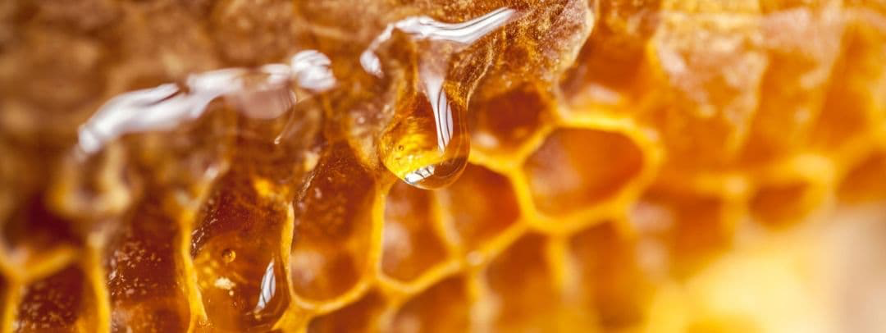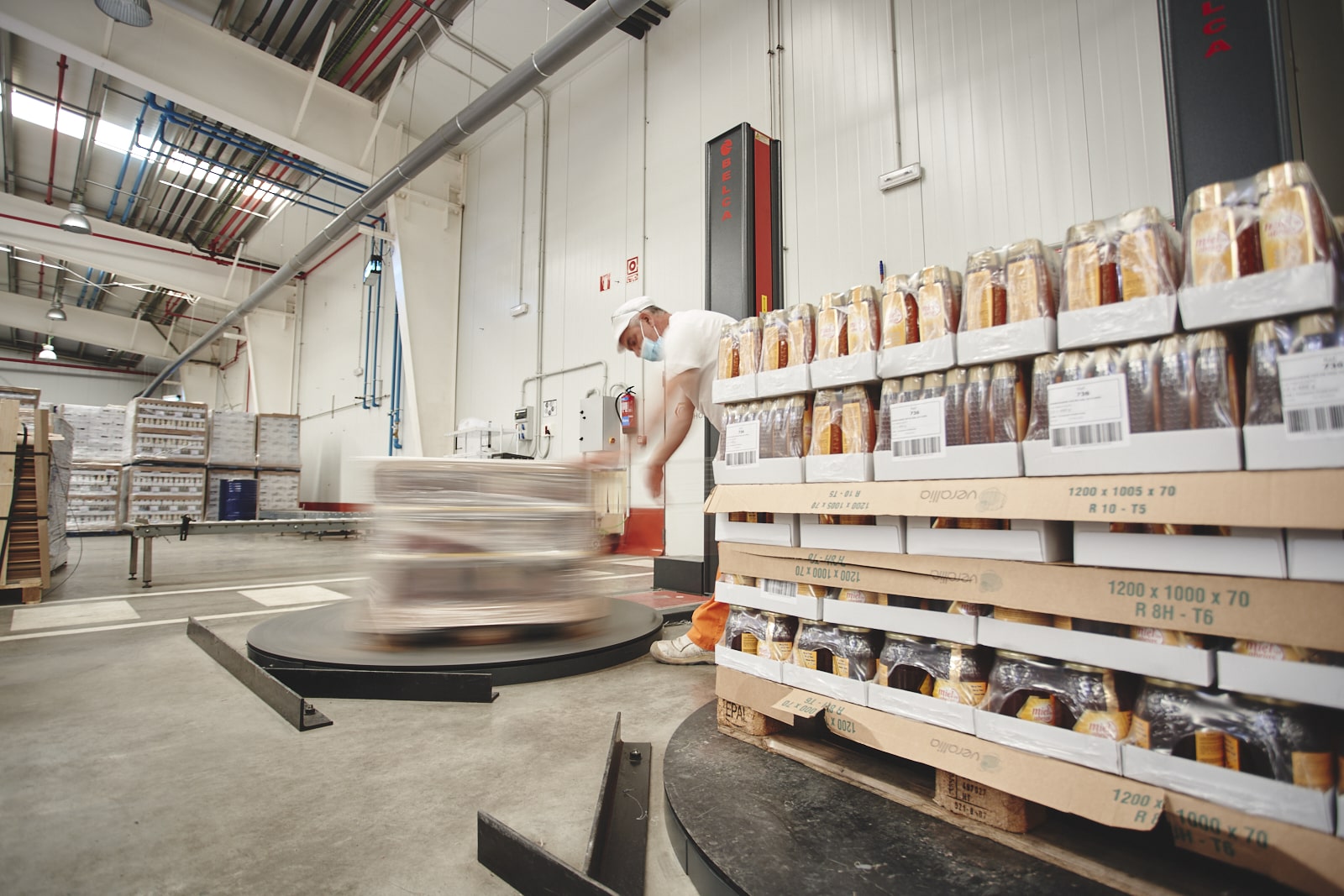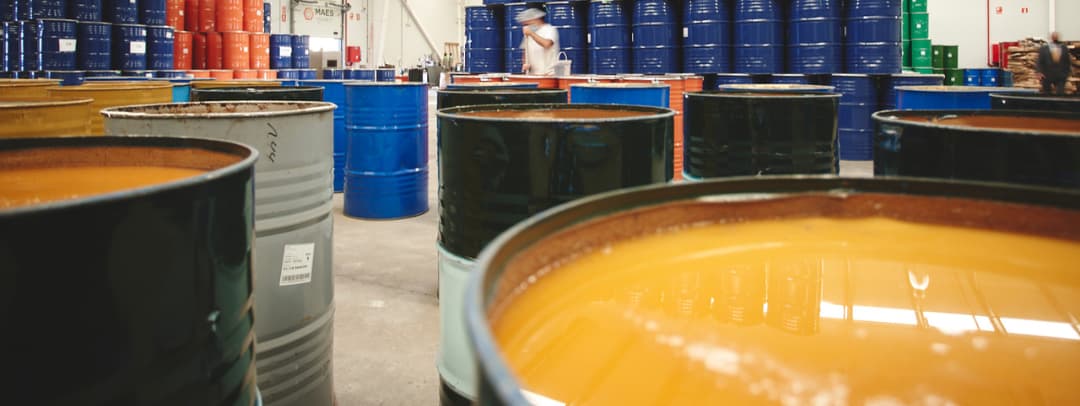Maes Honey has positioned itself as a leader in honey exports. The company has made headlines in La Gaceta de Salamanca after becoming the largest honey exporter by 2021. Specifically, the company is currently present in more than 30 countries.
The intense and constant work has led the company to grow by 10% and to achieve a turnover of around 25.5 million euros in 2021.
A company with a track record
MAES began its activity in 1910 in a small village in Salamanca called Valero. The first generation decided to use beekeeping as a means of subsistence, using it as a barter.
Manuela and Esteban decided to become great beekeeping professionals, becoming the best known in the whole area. Later, their son Cecilio also inherited their passion for the world of honey and bees, becoming the third generation of beekeepers.
It was not until years later that his son and current director of Maes Honey, César Redondo, decided to promote the company internationally.

Honey export quality
Despite the fact that 2020 and 2021 were difficult years due to the pandemic, Maes Honey managed to represent 20% of the honey exported from Spain. It is also one of the 10 largest packers in Europe.
MAES HONEY has been able to adapt to globalisation, preparing its facilities to the needs of the market and expanding its packaging plants. As a result, the company now has the largest and most modern plant in southern Europe.
One of the keys to its success is its constant commitment to the quality of its products. In addition, Maes Honey has all the highest quality certifications (IFS, BRC, FDA, Kosher or Halal) and its products are analysed very strictly and rigorously in the best laboratories in Europe. All this has led Maes Honey to become a leader in honey exports.
How is bee honey obtained?
Bee honey is obtained thanks to the work of bees. They collect nectar from flowers and the sap of certain trees such as oak and holm oak. Once the nectar has been collected, the bees transport it to their hives and concentrate it in the cells of the honeycombs to form honey.
When the honey is harvested, an expert beekeeper, taking care not to damage the hive, extracts the honey using specialised tools.

Benefits of honey
Honey is rich in naturally occurring carbohydrates, mainly fructose and glucose. It is an ideal food to consume in the morning at breakfast or mid-afternoon to provide energy.
It also contains a significant amount of vitamins and minerals such as vitamin B2, niacin, vitamin B6, folic acid, vitamin C, calcium, phosphorus, zinc, iron, potassium and magnesium.
It also provides amino acids and organic acids, such as acetic acid and citric acid.
- Regulates blood sugar: When honey is consumed, the fructose portion allows glucose to be taken up by the liver to form glycogen which becomes available to the brain, heart, kidneys and red blood cells.
- Reduces metabolic stress: Natural honey produces glycogen in the liver, which is the reserve of energy needed by the brain for normal functioning.
- It benefits our mind: Honey helps the absorption of calcium and magnesium, which are essential for our brain activity. For these reasons, honey helps to maintain adequate levels of these in the brain, improving our capacity for learning and memory.
- Combats high cholesterol levels: In the case of people with type 1 diabetes, honey has extremely beneficial properties for lowering levels of bad or LDL cholesterol while increasing levels of good or HDL cholesterol. Reducing LDL cholesterol levels can be a preventive factor in the onset of heart disease or stroke.
Uses of honey
There are many different uses for bee honey, some examples are:
Honey has been used as a natural sweetener for thousands of years and can be used in confectionery, alcoholic beverages, herbal teas, coffee, nuts and everything else you can think of.
Using bee honey to replace refined sugar is the best option, not only does it give a special taste to food, it can also enhance the flavour and is the most natural and healthy option.
As a medicinal remedy, we can use bee honey as:
- Potent antibacterial due to its high content of inhibins (hydrogen peroxide, flavonoids and phenolic acids).
- Anti-inflammatory: Honey has anti-inflammatory properties and can be used to reduce muscle inflammation and thus reduce the discomfort it causes.
- Helps digestion: Consuming honey together with lemon juice facilitates the digestion of food, helps to relieve acidity and promotes intestinal transit.
- It relieves cough and sore throat: The bee honey together with an infusion or hot milk, helps us to calm the cough and the sore throat, even many medicines include honey in its composition.
As a beauty treatment
- Exfoliant: Honey is an excellent natural exfoliant, and during exfoliation it also helps to moisturise the skin.
- Hair mask: You can use honey as a hair mask to make hair straightening easier, just mix 3 tablespoons of honey with warm water, apply it to the hair and remove it after 10 minutes.
- Antioxidant: Antioxidants slow down cell breakdown and honey has a significant amount of them. By slowing down cellular decomposition we also slow down skin ageing.
- Moisturising lip protector: In cold weather, it is very common to have dry lips and this can cause wounds, with honey we have an excellent lip balm that will help us to moisturise the lips and heal the wounds.

Honey ranges
Although we may think that there is only one type of honey, the truth is that there are many varieties of honey with different flavours, textures and health benefits.
To learn more about honey, it is important to know that each type depends on the species of flower from which the bee’s nectar has been extracted and the season of the year. Although there are plants that secrete different substances from which it is possible to obtain honey, for example, oak or holm oak, in general, honey comes from the nectar of flowers.
Types of flowers
- Monoflorals are characterised by having a greater amount of nectar from a single type of flower. Due to the great diversity of flowers in nature, it is possible to find orange blossom honey, thyme honey, heather honey, rosemary honey, chestnut honey, eucalyptus honey and many more.
- Flower honey, multifloral or milflores: this honey is not dominated by the presence of any particular flower, but is made from a wide variety of nectars from different flowers.
Monofloral honeys
Orange blossom honey
Orange blossom honey is characterised by being monofloral, with a predominance of nectar extracted from the orange blossom flower. Orange blossom is the natural flower of citrus fruit trees, in this case orange and lemon trees.
We will now tell you about the different Bonapi honeys, which include both single-flower honeys and flower honeys.
Acacia blossom honey
This honey is monofloral, obtained from the acacia flower, a flower with 5 petals and a very intense smell. The acacia flower belongs to the trees of the Fabaceae family.
Acacia flower honey is characterised by a very light, sometimes almost transparent colour, high levels of fructose, a very light texture, a floral aroma and a very mild neutral taste. It is precisely this fine, neutral taste that has led to acacia blossom honey being frequently used as a natural sweetener.
Forest honey
This honey, which is also known as mielato, mielada or rocío de miel, is mainly produced with the honeydew that the bees find on the leaves of trees such as oaks, holm oaks and cork oaks.
This type of honey stands out for its dark amber colour, being a less sweet variety than the previous honeys. With a strong flavour and salty notes, the aroma of forest honey is characterised by being floral, malty and very intense.
Organic honey
Organic honey is honey obtained from blossoms grown in certified organic fields. These fields are characterised by the fact that they comply with all the requirements established by organic beekeeping.
This honey can be multi-flower or multi-flower depending on the field. Organic honey has a sweet and pleasant taste with a more classic amber colour.

MAES HONEY exports 84% of honey from Salamanca.
MAES HONEY has consolidated its position as a leader in honey exports in Castilla y León despite the difficulties of the beekeeping sector in recent years.
Today, the company has managed to get its honey from Salamanca to different European countries. After three years, MAES HONEY continues to grow and has managed to export 6,697,930 kg of honey in Salamanca alone by 2021, making it the leader in this sector. The company also reached 7,922,508 kg in Castilla y León.
These excellent figures are due to its commitment and demands towards suppliers, laboratories, workers, etc. … which facilitate the production of quality honey.
Quality of Maes Honey honey
At Maes we are committed to the quality and safety of our products. We take care of the product from the purchase of honey to its optimal arrival to consumers. From the acquisition of the raw materials to the delivery of the honey, all the processes of selection, reception, production and dispatch are subject to strict and rigorous control.
This is why there are certification processes; Maes Honey is the Spanish honey company with the most certifications: BRC, IFS, Kosher, FDA and Halal.
You may also be interested in:



